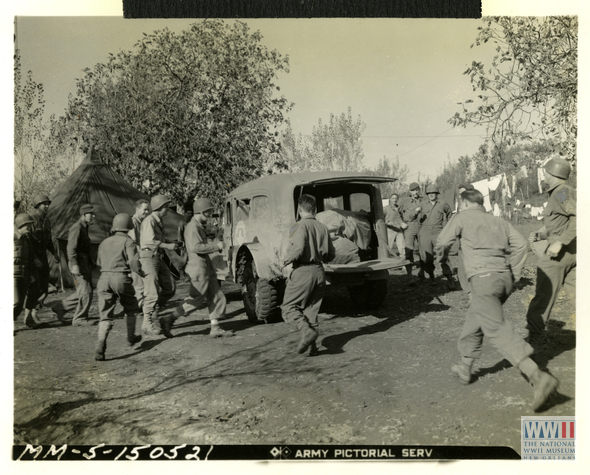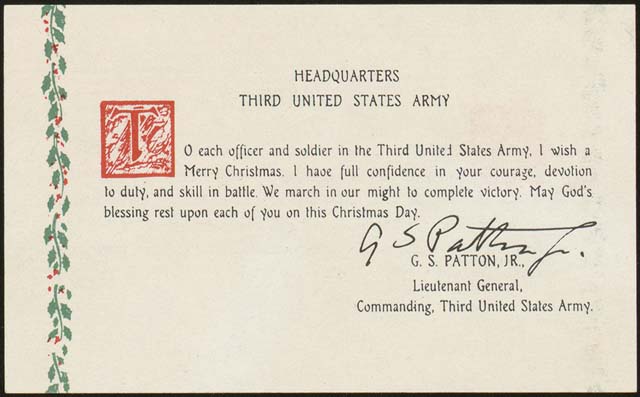Home Front Friday: The Gifts That Keep On Giving
Home Front Friday is a regular series that highlights the can do spirit on the Home Front during World War II and illustrates how that spirit is still alive today!
Far from home and making their way through unknown territories, soldiers during WWII relied on hand written notes to communicate with their loved ones back on the Home Front. Since today is National Christmas Card Day, we’re going to give a shoutout to these letters that deliver the holiday cheer. These days we have cards with puns and cute catch phrases capturing feelings of love and joy people have for each other. Hallmark always seems to have some sort of new design that really tugs at the heart strings. During WWII, specific Christmas cards were created to send to soldiers. Many troops carried these cards with them throughout their time overseas because they boosted their morale and encouraged them to continue the fight. Christmas cards were truly a gift that kept on giving hope and served as lights at the end of a long tunnel.

US soldiers receive Christmas mail in Italy on 26 November 1943.

US soldiers receive Christmas mail in Italy on 26 November 1943.
It was a tough time for many families to be separated by thousands of miles of ocean and land from their loved ones who were constantly in harms way to restore some sort of peace. Troops were nostalgic for home and familiarity while the Home Front desired to give them a piece of home that brought small elements of joy to their tough days. Hand written letters, packages, and recordings were among the most popular items sent, and during the Christmas season, specific cards were made to wish joy and bestow blessings on the troops.

Courtesy of the Library of Congress.
Hallmark Cards joined the Home Front effort with their slogan, “keep ‘em happy with mail.” The company created cards of all sorts, as they do today. These cards were small tokens of affection that held special places in soldiers’ hearts. The United States Army Postal Service collected Christmas items set to be mailed to soldiers way before December in order to be certain that the packages and cards got there in time. This is a special time of year, and although it was just another day of fighting or arriving at new destinations, these soldiers deserved to receive some holiday cheer. Mailed items were their portable pieces of home that allowed a connection with loved ones from afar as well as brought a sense of calmness to otherwise stressful times. These small moments of connection, even if they were from thousands of miles away, made a day in their lives that much better.

Courtesy of the National Archives.
As all else, Christmas cards during WWII reinforced the patriotic spirit of the Home Front. Cards sent to soldiers typically had a red, white, and blue color scheme as well as an uncle Sam or a Santa Claus dressed as a soldier. This military-esque Santa could also be found on propaganda released during the holiday season that encouraged people to buy war bonds as Christmas gifts. There were also simple cards with a wreath and a, “Merry Christmas,” followed by a space for people to write their own personalized messages. In 1944, General George Patton sent cards out to his troops reminding each of them of the full confidence he had in their strength and dedication to victory. Check out the full card below.

Courtesy of the Library of Congress.
In honor of National Christmas Card Day, here are a few ways you can send mail to our troops overseas or to veterans near you.
Here are a few links to follow in order to write and mail letters:
If you want to embrace your inner Santa Claus, try baking some cookies, brownies, or another treat of some sort for your veterans.
Posted by Camille Weber, Education Intern and Lauren Handley, Assistant Director of Education for Public Programs at The National WWII Museum.
- Posted :
- Post Category :
- Tags : Tags: Home Front
- Follow responses to this entry through the RSS 2.0 feed. You can skip to the end and leave a response. Pinging is currently not allowed.




Leave a Reply